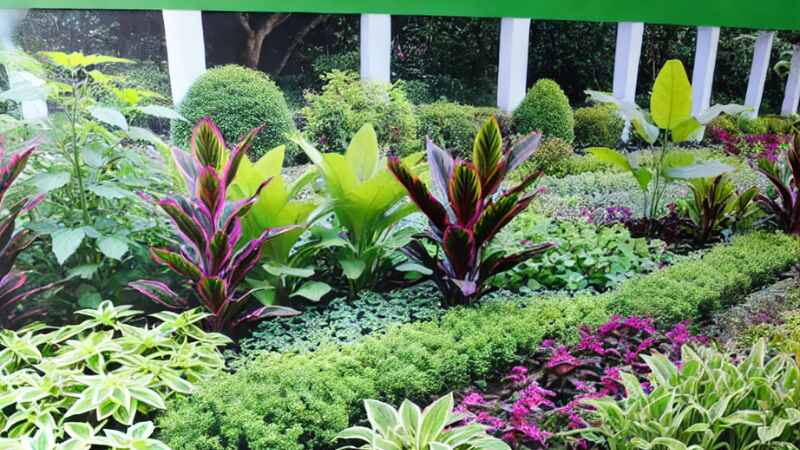Introduction: The essential role of water in the plant
Water is the lifeblood of all plants and is vital to their growth, health, and productivity. Just as animals need hydration for survival, plants depend on water for almost every bodily function. Water is essential in photosynthesis the process by which plants convert sunlight into food.
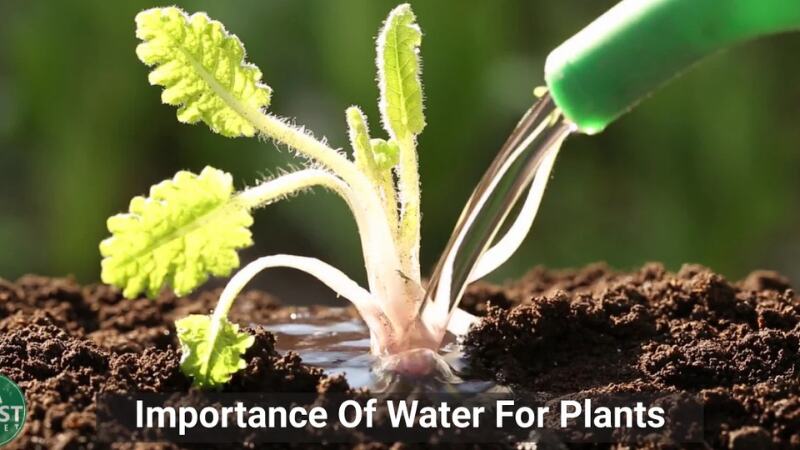
Without giving water the plant cannot absorb essential nutrients from the soil, grow to their full potential, or remain structurally stable. Proper watering practices contribute to strong, healthy plants able to resist disease, pests, and environmental stress.
Whether you’re growing succulents, tropical houseplants, or a vegetable garden, understanding and prioritizing the role of water is fundamental to successful plant care.
In this article, we’ll explore why water the plant is important, the science behind the effects of water the plant health, and how different plants have different watering needs. This comprehensive guide will cover watering best practices, seasonal adjustments, common mistakes to avoid, and how advanced watering techniques can improve plant health and water conservation efforts.
Water the Plant: Understanding Its Importance Beyond Hydration
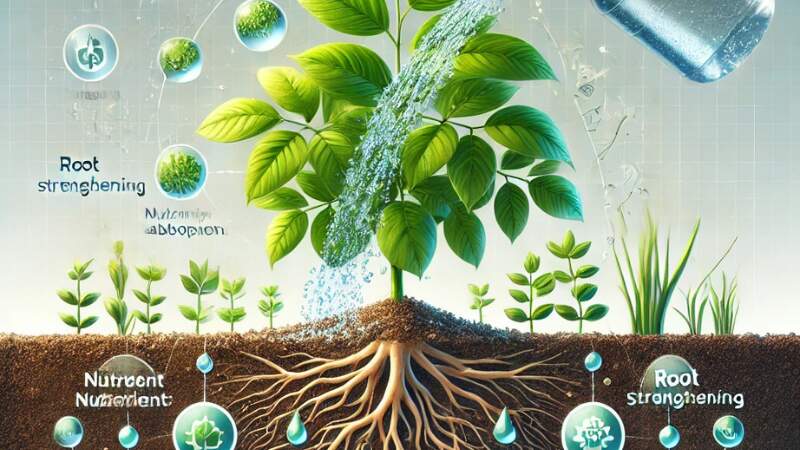
Water the plant is much more than a simple act of providing moisture; it is a deliberate process that fulfills a plant’s essential needs and enhances its overall well-being. When you water the plant, you are not just hydrating it but also initiating a series of vital biological processes that directly contribute to its growth, health, and resilience.
The Role of Water in Cellular Function and Growth
At a cellular level, water the plant is integral to the structure and function of plant cells. Each plant cell relies on water to maintain turgor pressure, which keeps the plant’s stems, leaves, and flowers firm and upright. When plants lack water, their cells lose this pressure, causing leaves to droop and stems to wilt.
This can lead to irreversible damage if prolonged. Water the plant restores this pressure, allowing it to retain its shape and structural integrity.
Additionally, water the plant is necessary for cell division and growth processes that form the basis of a plant’s life cycle. From young seedlings to mature plants, each stage of development requires a consistent supply of water to ensure that new cells can form and strengthen the plant structure.
Properly watering the plant enables it to reach its full potential, resulting in more robust growth, vibrant foliage, and, in the case of flowering plants, more abundant blooms.
Water and Nutrient Uptake
As you water the plant, water enters the roots, dissolving essential nutrients in the soil and creating a nutrient solution that the roots can easily absorb. This solution travels up through the plant, distributing nutrients to the leaves, stems, and flowers where they are needed most.
Without adequate water the plant cannot complete this nutrient distribution, leading to deficiencies and stunted growth.
A Balanced Approach to Plant Care
Understanding when and how much to water the plant is critical. Overwatering can suffocate roots, while underwatering can lead to dehydration and nutrient loss. By watering the plant with purpose and attention, you are not only supporting its hydration needs but also encouraging a balanced, healthy ecosystem where plants can thrive in harmony with their environment.
Watering the plant is an act of nurturing that goes beyond the surface, creating a resilient plant that can withstand environmental challenges. With a mindful approach to water the plant, you are laying the foundation for a thriving garden
Why water the plant is essential for growth and survival.
Water the plant is an important component of plant cells, contributing to overall plant structure and cell function. A closer look at the role of water the plant growth reveals three essential functions: nutrient transport, photosynthesis, and structural support.
Nutrient transport: Greenery takes nutrients from the soil via the root system. These nutrients dissolve in water, producing a nutrition solution that the roots may take, Once in the plant, water continues to transport these nutrients to the leaves, stems, and other tissues.
Plants that are unable to access water will show signs of nutrient deficiency, such as leaf yellowing or stunted growth.
Photosynthesis:
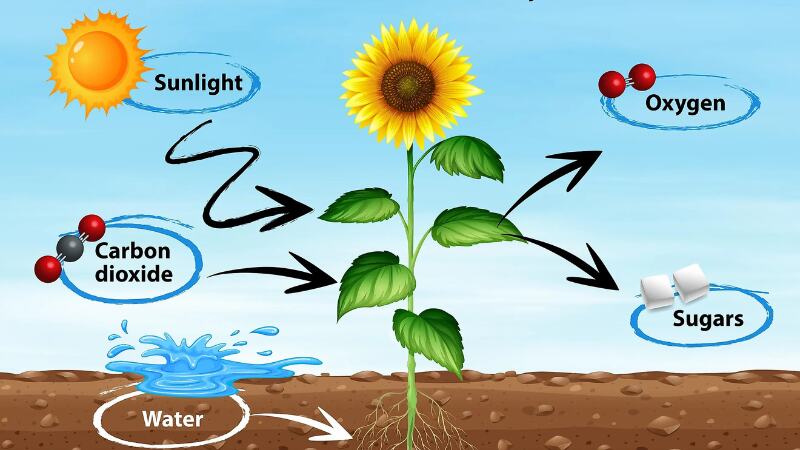
Photosynthesis is the process that allows plants to convert sunlight into energy, which produces food for growth. An essential component of water the plant is the process of watering When sunlight hits plant leaves, water molecules split to release oxygen, hydrogen, and electrons.
These components help convert carbon dioxide and sunlight into glucose, the plant’s main source of energy. Without enough giving water the plant photosynthesis slows or stops, affecting plant growth and survival.
Structural Support: Water pressure inside plant cells, called turgor pressure, keeps plants upright. When cells are filled with water, they push against the cell walls, giving the plant strength and rigidity. If a plant is dehydrated, it begins to wilt as cells lose turgor pressure.
causing the plant to collapse and cause irreversible damage if not corrected. So water the plant is not just for hydration. It is essential for plant biology. When you water the plant properly, you are supporting its ability to grow, produce food, and stay structurally sound.
Determine the water requirements of various plants.
Not all plants demand equal amounts of water, Factors such as plant species, natural habitat, soil type, and even the pot or container used can all affect how much water a plant needs.
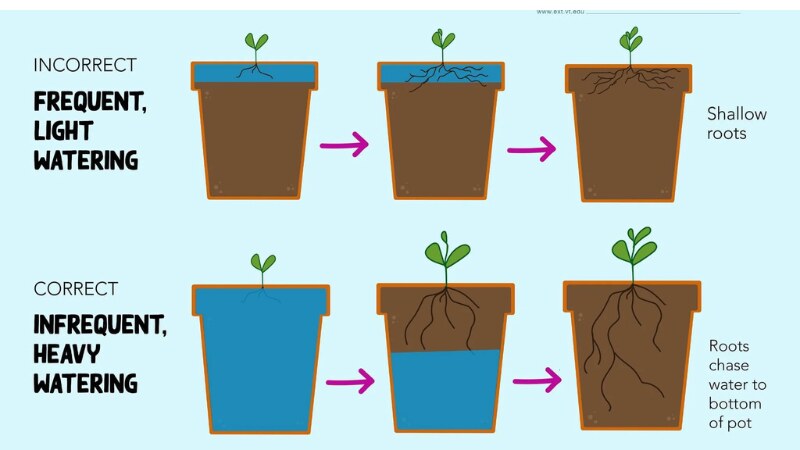
Indoor vs. Outdoor Plants: Indoor plants, which are protected from wind, rain, and strong sun, require less water the plant than outdoor plants. However, indoor plants can suffer from dry indoor air, which can cause rapid evaporation. Outdoor plants require more water the plant and are exposed to weather changes, especially in warmer climates, and require more frequent watering.
For example, potted flowers like petunias may need daily watering in the heat of summer.
Succulents and cacti: Succulents and cacti, native to dry environments, have adapted to survive with minimal water.
They store water in their leaves or stems, allowing plants to go for lengthy periods without watering, Overwatering these plants can cause root rot, so it’s best to water them sparingly and allow the soil to dry up in between waterings.
High-humidity plants: Tropical plants such as ferns and calatheas require high humidity and constant humidity. Their natural habitat is humid and shady, so they do best with frequent watering and occasional misting to mimic that environment. However, even these plants can suffer from overwatering, so it’s best to keep the soil moist without saturating it.Observing the natural habitat of each type of plant provides insight into how to properly water the plant accordingly. Choosing appropriate containers, such as those with drainage holes, and using a soil mix appropriate for the type of plant can also help maintain ideal moisture levels.
Best times and methods to water the plant
The timing and method of watering can greatly affect plant health. In general, early morning watering is ideal because it allows the plants to absorb moisture before the heat of the day.

Top Watering: Watering at the soil surface is the most common method for indoor and outdoor plants. Overhead watering encourages deeper root growth, as water soaks into the lower layers of the soil. It is important to water the plant until the soil is moist but not soggy and avoid allowing water to pool on the surface.
Bottom watering: Bottom watering involves placing the plant pot in a tray of water, allowing the plant to absorb moisture through its drainage holes. This method helps prevent soil surface degradation and fungal growth on leaves. Watering from below is especially useful for indoor plants and helps plants develop a strong root system.
Misting: Misting can meet the water needs of tropical plants that thrive in high humidity. It’s important not to rely solely on mist, as it doesn’t provide enough hydration. Instead, misting is a complementary technique to increase ambient humidity around plants such as orchids or ferns.
By understanding and using these techniques, you can avoid common watering pitfalls and maintain optimal moisture levels for healthy plant growth.
Common watering mistakes and how to avoid them
Even experienced gardeners can make watering mistakes, some water plant mistakes should be avoided.
Overwatering: Overwatering is a major cause of disease, often resulting in root damage. Root rot occurs when roots are submerged in water for long periods, depriving them of oxygen. To avoid more water the plant, use well-draining soil, let the topsoil dry out between waterings, and always check the soil moisture.
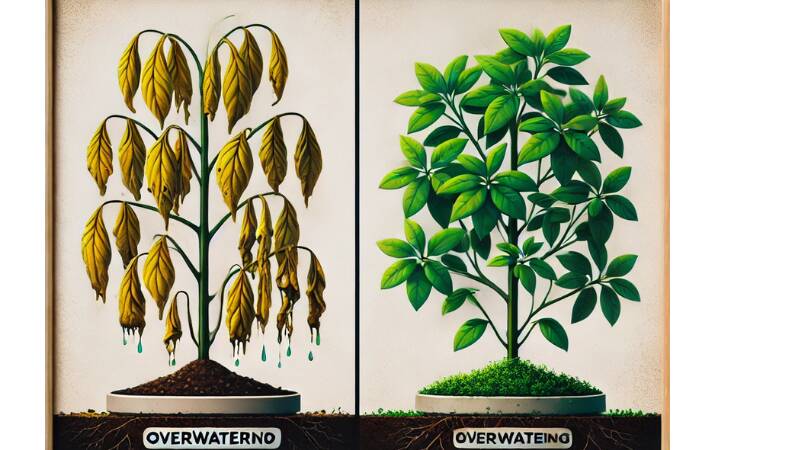
Submerged: Submerged plants will exhibit dry, cracked soil, stunted growth, and drooping leaves. To avoid waterlogging, set a watering schedule based on plant needs, and consider using a moisture meter to measure soil hydration levels.
Improper drainage: Containers without drainage holes trap water, leading to waterlogging. Always use pots with drainage holes, or add gravel to the bottom of the pots to improve drainage and prevent root problems.
Avoiding these mistakes ensures water the plant accordingly and receive adequate hydration without risking disease, root damage, or poor growth.
Indoor vs. Outdoor Plant Watering Techniques
Indoor and outdoor plants face different environmental conditions, which affect how they should be watered:
Indoor Plants: Indoor plants are protected from outdoor weather conditions, which can sometimes create a more stable environment. However, factors such as heating, air conditioning, and artificial lighting can still affect their water needs. Indoor plants should be watered sparingly, especially in winter when growth slows down.
Outdoor Plants: Outdoor plants experience seasonal changes and may require more frequent watering, especially during dry summer months. Rain can cover watering needs, but constant monitoring of soil moisture is essential, especially for container plants exposed to direct sunlight.
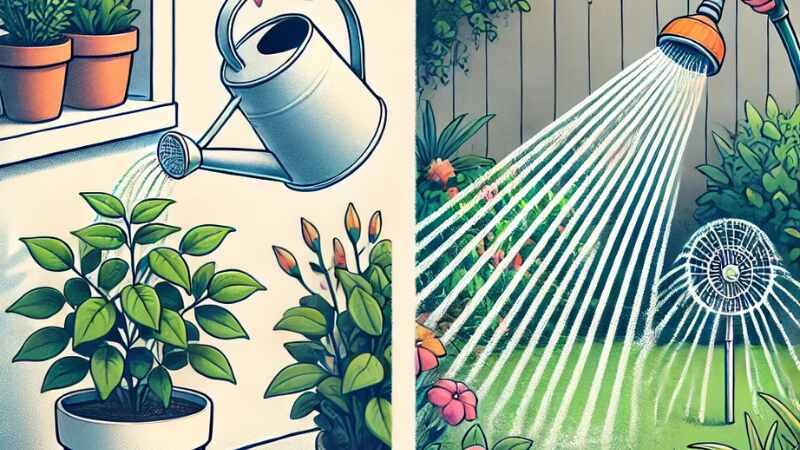
Differentiating indoor and outdoor plant watering techniques can improve your plant care strategy, ensuring that each plant receives the hydration it needs based on its location.
Innovative irrigation techniques for water conservation and plant health: Modern watering techniques support plant health by promoting efficient water use:
Self-watering planters: Self-watering containers with water reservoirs supply plants gradually, reducing the risk of overwatering and water conservation. This technique is ideal for forgetful plant owners or during hot weather.
Drip Irrigation: Drip irrigation systems deliver water directly to the soil, minimizing waste and preventing water from sitting on leaves where fungus can grow. This system is equally beneficial for outdoor gardens and potted plants.
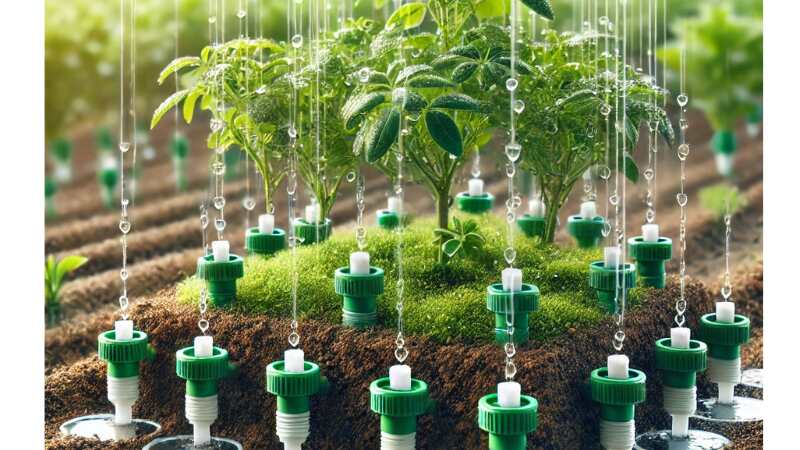
Using modern techniques supports responsible water the plant and can simplify the maintenance process, especially for high-maintenance plants.
How to adjust watering based on soil type
The type of soil in which a plant grows significantly affects its water requirements. Different soils retain and release water at different rates, affecting how often and how much you should water.
Sandy soil: Sandy soil is loose, with large particles that create enough space for water to flow quickly. This soil type drains water very quickly, making it difficult to retain moisture for long periods. Plants in sandy soils often need more water, especially in hot climates, because water can evaporate more quickly.
Adding organic matter or mulch on top of sandy soil can help retain moisture and reduce evaporation, providing plants with a more constant source of hydration.
Clay soil: Clay soil is dense with small particles that hold water well but can sometimes cause waterlogging. Plants in clay soils are at risk of root rot if overwatered, as the soil retains moisture for long periods. To improve drainage, consider mixing in sand or organic compost, which creates better aeration and prevents water from pooling around the roots.
Loamy Soil: Often considered the ideal soil type for most plants, loamy soil balances moisture retention and drainage. With its rich, loose texture, loamy soil retains nutrients and provides easy access to water for roots without becoming overly wet. Loamy soils generally require moderate amounts of water, making them suitable for a wide range of plants.

Understanding your soil type helps you adjust through water the plant process, ensuring your plants get the hydration they need without risking water stress or root rot. Testing the soil’s texture and drainage capabilities can guide you toward the correct frequency and amount of watering.
Signs that your plant needs more or less water.
Recognizing the signs that a plant needs more or less water is key to maintaining plant health. Plants can’t tell us when they’re thirsty or need to water the plant but they do show certain signs that can guide your watering decisions.
Symptoms of waterlogging: When a plant does not receive enough water, it may show symptoms such as drooping or wilting leaves, dry or cracked soil, and browning of leaf edges. In severe cases, the leaves may turn yellow and drop, as the plant cannot support them without sufficient hydration.
To avoid waterlogging, check the soil regularly, especially in hot weather, and adjust the watering routine to each plant’s needs.
Symptoms of overwatering: Overwatered plants may develop yellow or mushy leaves, soft stems, and general wilting even when the soil is moist. Root rot is a common problem caused by overwatering, which can kill plants if left untreated.
A sign of overwatering is a sour or rotten smell from the soil, which indicates a lack of oxygen in the roots. If you suspect overwatering, allow the soil to dry out before the next watering, and make sure the pot has adequate drainage.
General indications: In addition to these specific symptoms, plants may show slow growth, fewer flowers, or general weakness if the plant’s water needs are not being met. Observing your plants closely helps you adjust your watering habits to prevent stress and promote healthy growth.
By learning to interpret these signs, you can effectively respond to your plant’s needs, keeping them hydrated without putting them at risk of overwatering or overwatering.
Use of mulch to retain moisture and reduce watering frequency
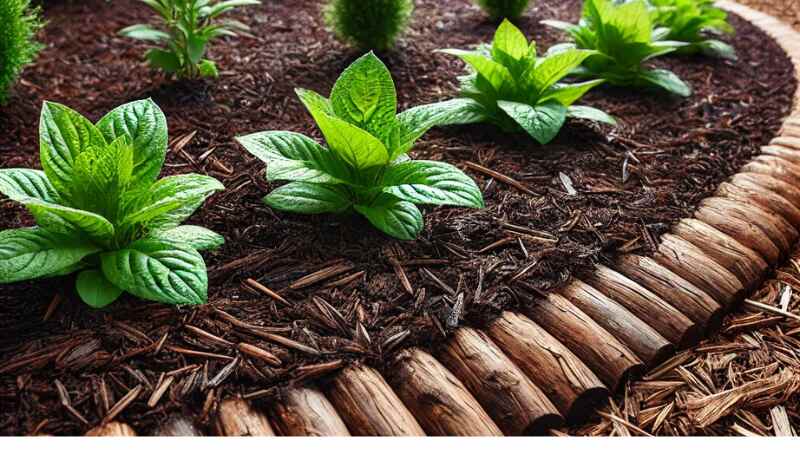
Mulching is an effective way to retain moisture in the soil, helping plants stay hydrated and reducing the frequency of watering. Mulch acts as a protective layer on the surface of the soil, providing several benefits in addition to moisture retention.
Moisture Retention: By covering the soil, mulch reduces evaporation, which helps the soil retain moisture longer. This is especially beneficial for outdoor gardens exposed to direct sunlight, where water can evaporate quickly. Mulch helps keep the soil cool and moist, creating a more stable environment for plant roots.
Mulch acts as a barrier, blocking sunlight from reaching grass seeds and preventing them from germinating. With fewer weeds, your plants get more resources and you won’t have to water as often for extra growth.
In summer, mulch keeps the soil cool by protecting it from direct sunlight. In winter, it helps retain heat, prevents soil from freezing, and reduces plant stress.
Organic mulches, such as wood chips, straw, or compost, break down over time, enriching the soil with nutrients. Using mulch not only helps conserve water, but also improves soil health, benefits plant growth, and reduces overall water requirements. Mulching is a simple, sustainable practice that improves plant health, especially in areas prone to dry conditions.
Conclusion:
Mastering proper techniques to water the plant is essential for growing healthy, resilient plants. By understanding each plant’s needs, adopting smart watering practices, and recognizing common mistakes, you create an environment where plants can thrive. Regular observation and adjustments to watering schedules can keep your plants vibrant, promoting sustainable gardening practices for healthier ecosystems and greener spaces.
When you water the plant consistently and carefully, you help it reach its full potential, allowing it to produce stronger roots, lush foliage, and beautiful blooms. Water the plant properly not only enhances its appearance but also makes it more resilient to pests, diseases, and environmental stressors. In turn, this mindful approach to water the plant contributes to a flourishing and sustainable green environment.
